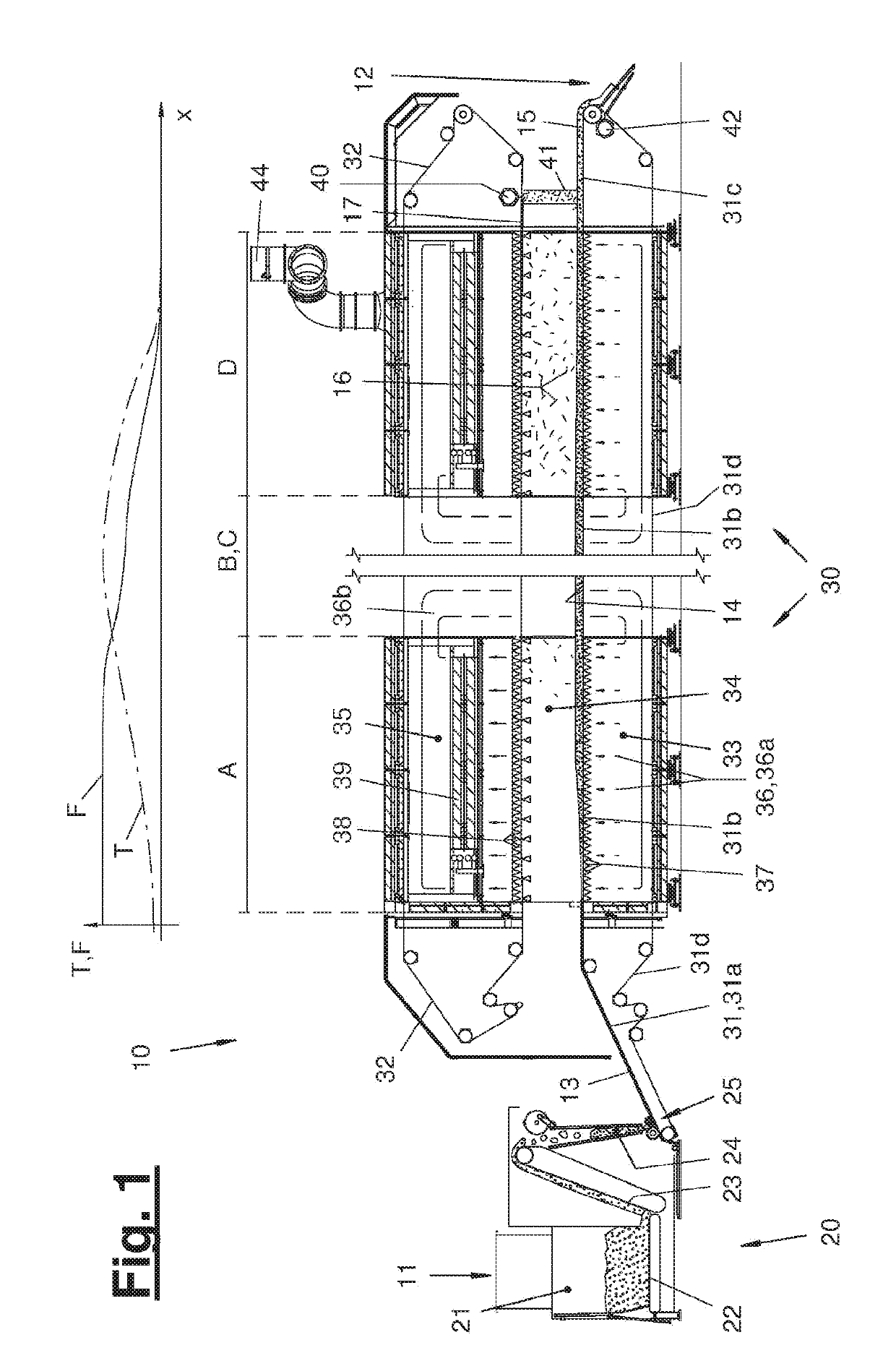Textile fiber drying
a textile fiber and textile technology, applied in drying machines, lighting and heating apparatus, furnaces, etc., can solve the problems of insufficient loosening of fibers, impaired drying capacity, and compressed fibers between belts,
- Summary
- Abstract
- Description
- Claims
- Application Information
AI Technical Summary
Benefits of technology
Problems solved by technology
Method used
Image
Examples
Embodiment Construction
[0029]Referring to the drawings, FIG. 1 shows a fiber treatment plant (10) with a fiber mat producer (20) and with a fiber dryer (30). A conveying direction (x) extends through the fiber treatment plant (10) from the left side to the right side in FIG. 1.
[0030]In the area of a wet fiber feed hopper (11), wet or damp fibers can be fed to the fiber treatment plant (10) in any desired initial form, for example, as bulk material, which can be filled into the feed tub of the fiber mat producer (20). The fiber mat producer (20) shown in FIG. 1 is an exemplary embodiment in the manner of a hopper feeder. As an alternative, any other desired fiber mat producer (20) may be provided, for example, in the form of a feed shaft or of a vibrating shaft feeder. Likewise as an alternative, the fiber treatment plant (10) may be formed without a fiber mat producer (20), for example, if the wet or damp fibers can already be fed as a fiber mat or fiber strand from a working device arranged upstream.
[003...
PUM
 Login to View More
Login to View More Abstract
Description
Claims
Application Information
 Login to View More
Login to View More - R&D
- Intellectual Property
- Life Sciences
- Materials
- Tech Scout
- Unparalleled Data Quality
- Higher Quality Content
- 60% Fewer Hallucinations
Browse by: Latest US Patents, China's latest patents, Technical Efficacy Thesaurus, Application Domain, Technology Topic, Popular Technical Reports.
© 2025 PatSnap. All rights reserved.Legal|Privacy policy|Modern Slavery Act Transparency Statement|Sitemap|About US| Contact US: help@patsnap.com



